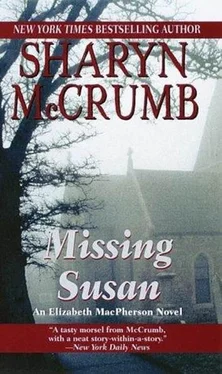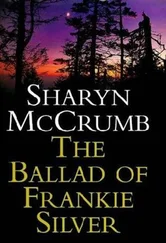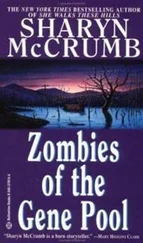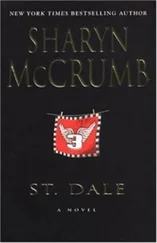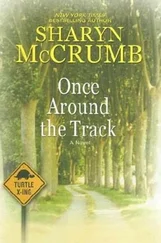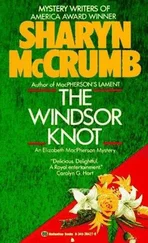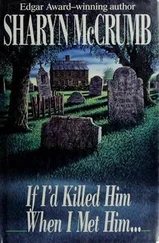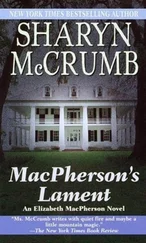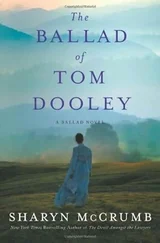Sharyn McCrumb - Missing Susan
Здесь есть возможность читать онлайн «Sharyn McCrumb - Missing Susan» весь текст электронной книги совершенно бесплатно (целиком полную версию без сокращений). В некоторых случаях можно слушать аудио, скачать через торрент в формате fb2 и присутствует краткое содержание. Жанр: Детектив, на английском языке. Описание произведения, (предисловие) а так же отзывы посетителей доступны на портале библиотеки ЛибКат.
- Название:Missing Susan
- Автор:
- Жанр:
- Год:неизвестен
- ISBN:нет данных
- Рейтинг книги:3 / 5. Голосов: 1
-
Избранное:Добавить в избранное
- Отзывы:
-
Ваша оценка:
- 60
- 1
- 2
- 3
- 4
- 5
Missing Susan: краткое содержание, описание и аннотация
Предлагаем к чтению аннотацию, описание, краткое содержание или предисловие (зависит от того, что написал сам автор книги «Missing Susan»). Если вы не нашли необходимую информацию о книге — напишите в комментариях, мы постараемся отыскать её.
Missing Susan — читать онлайн бесплатно полную книгу (весь текст) целиком
Ниже представлен текст книги, разбитый по страницам. Система сохранения места последней прочитанной страницы, позволяет с удобством читать онлайн бесплатно книгу «Missing Susan», без необходимости каждый раз заново искать на чём Вы остановились. Поставьте закладку, и сможете в любой момент перейти на страницу, на которой закончили чтение.
Интервал:
Закладка:
They checked into the Lion Hotel, an old coaching inn on the summit of the town’s old street, Wyle Cop. Former guests at the seven-hundred-year-old establishment had included Charles Dickens, and Jenny Lind, the Swedish Nightingale. Such real celebrities, however, paled beside Shrewsbury’s true celebrity: Brother Cadfael, who never existed at all. In his way, though, he was as much a local dignitary as was Jack the Ripper in the East End. The bookstores and curio shops sold Brother Cadfael dolls and hand-drawn maps, and the Abbey Church of Saint Peter and Saint Paul, his erstwhile home, featured an entire rack of Brother Cadfael paperbacks in the back of the sanctuary itself.
Susan was extremely amused by that. “That’s great!” she said with a laugh. “Ellis Peters has become a local industry. Boy, I’ll bet Joan Hess wishes they’d sell her books in the Baptist Church in Fayetteville, Arkansas! Wait till I tell the fans back home.”
Elizabeth, whose interest in fictional crime was minimal, had to have all this explained to her twice, but she went along uncomplainingly on the one-hour Cadfael walk, provided Sunday morning by a knowledgeable city guide. (The shops were all closed, of course.) Susan, who had read all of Ellis Peters’ work several times, was being her usual tiresome self, embellishing all the guide’s remarks with plot summaries of each of the books. At one point Alice MacKenzie was heard to murmur that a reenactment of a Brother Cadfael murder wouldn’t come amiss. She was looking pointedly in Susan’s direction at the time.
That afternoon, many of the group took walks of their own along the Meole Brooke (now called the Rea Brook) or up to the castle overlooking the River Severn. The weather was still more warm and fair than anyone had a right to expect in an English autumn. By now they were quite spoiled by their good fortune and were taking it for granted.
Elizabeth spent the afternoon writing more letters and examining her map to see what real murder sites lay on tomorrow’s route. She had found Shrewsbury disappointingly peaceful and law-abiding. As she looked over the names on the map, one quite near Oxford struck a familiar chord: Cumnor.
“Amy Robsart!” whispered Elizabeth. In addition to her true crime addiction, she had taken to reading the novels of Sir Walter Scott, as an homage to her newly adopted homeland. In Kenilworth she had discovered a sixteenth-century mystery that seemed to implicate Queen Elizabeth herself. Her latter-day namesake took her collection of crime books out of her suitcase and began to search for an account of the mysterious death at Cumnor Place. In the third book she found an article on it, and soon she was happily engrossed in real medieval intrigue.
Amy Robsart, the only heir of the Duke of Norfolk, fell in love with Robert Dudley, third son of the Earl of Leicester, and in 1550, at the age of eighteen, she married him in a grand wedding attended by the boy king Edward VI. “The Prince and the Pauper,” muttered Elizabeth, whose knowledge of history was heavily reinforced by popular fiction.
The young couple lived together in the country, seemingly happy, and certainly wealthy. At the death of Amy’s father, she inherited his considerable fortune. There was trouble for them, when Dudley was imprisoned for taking part in the Lynn Rebellion, but by and by he was released and they went home to the country once more.
In 1558 Queen Elizabeth ascended the throne, and Robert Dudley was summoned to court. First he was made Master of the Horse, and then a Knight of the Garter. He was constantly in the company of the queen. Amy stayed at home in the country. Soon it was common gossip in the court that the queen was familiar with Dudley, and people began to speculate on whether he would divorce his wife to marry the Virgin Queen. Ambassadors reported home that England would soon have a King Consort.
On September 4, 1560, the queen remarked that Lord Robert’s wife was exceedingly ill, and perhaps already dead. In fact, twenty-eight-year-old Amy was in perfect health at Cumnor Hall-but four days later she lay dead at the foot of the main staircase with a broken neck.
“The queen was an accessory before the fact,” murmured Elizabeth. “I wonder what Rowan will say about that?”
Rowan, who was somewhat tired from his morning train ride, and even more preoccupied with more current intrigues, looked completely horrified at his seatmate’s suggestion that Queen Elizabeth was an accessory to murder. “Nonsense! I don’t believe a word of it.”
“But how do you explain the fact that she knew Amy Robsart was going to die four days in advance?”
“Amy Rob-oh!” Rowan reddened. “That Queen Elizabeth. I thought you meant the Queen Mum. Sorry, I must have drifted off for a moment.”
It was a clear day, with a chill wind making it cooler than usual, as the coach sped eastward out of Shropshire and back toward Oxford, which even in Amy Robsart’s time was considered within commuting distance of London.
“Well?” said Elizabeth. “Was she murdered?”
With considerable effort the guide turned his attention to the conversation. “Who? Oh, Amy Robsart? Yes, of course she was murdered. Wives never fling themselves down staircases just because one has one’s eye on a new bird.” He spoke with heartfelt sincerity. “At least mine never do.”
“I thought her death was rather convenient. Wealthy little Amy dies, leaving her husband with a fortune and with the freedom to marry his sovereign, untainted by the divorce courts.”
“He wasn’t home at the time,” Rowan pointed out.
Elizabeth snorted. “Would you be?”
“No. I suspect that his henchman-in-residence, Forster, did the deed, and that it was all hushed up at the inquest, which Dudley stage-managed personally. All the documents concerning the inquiry into Amy Robsart’s death were destroyed, you know, so we can’t very well second-guess the case from this century. But perhaps the most damaging writing about the case was an anonymous bit of libel called Leicester’s Commonwealth. Copies of it went round England like a naughty chain letter. That book called Lord Robert an adulterer, a murderer, an atheist, a coward. Just about every bit of invective imaginable. And even before that book appeared, people were scandalized by Amy’s convenient death, so the queen had to give up her intention of marrying him-if indeed she had ever meant to. She was very sharp in public relations, was Gloriana.”
“Can we go and see Cumnor Place?” asked Elizabeth. “It’s just outside Oxford.”
“I’m sorry,” said Rowan. “You are several hundred years too late. Not even the ruins remain, and I have no idea where the hall itself actually stood. It’s probably a street of bungalows these days. But Amy herself is buried in St. Mary’s Church on the high street in Oxford, if you’d like to pay your respects.”
“Thank you,” said Elizabeth. “I will.”
They had a cold afternoon’s walk at another medieval ruin, Minster Lovell Hall, a roofless stone shell on the banks of the River Windrush. The stately ruins lay in pastoral solitude in an expanse of meadow, bordered by the little country Church of St. Kenelm, resting place of the manor’s builder. As they walked about the site, chivvied by the wind, Rowan told them Minster Lovell’s romantic tale: the discovery in 1708 of the body of the last Lord Lovell, hidden away in a secret room.
“That was silly!” Susan Cohen declared. “Did they forget where they put him? It was the English Civil War, wasn’t it? I know about priests’ holes from The Gyrth Chalice Mystery by Margery Allingham-”
“No,” said Rowan hastily. “Francis, Viscount Lovell, was somewhat ahead of his time on that score. He supported an impostor named Lambert Simnel, who attempted to depose Henry VII. You remember Henry VII?”
Читать дальшеИнтервал:
Закладка:
Похожие книги на «Missing Susan»
Представляем Вашему вниманию похожие книги на «Missing Susan» списком для выбора. Мы отобрали схожую по названию и смыслу литературу в надежде предоставить читателям больше вариантов отыскать новые, интересные, ещё непрочитанные произведения.
Обсуждение, отзывы о книге «Missing Susan» и просто собственные мнения читателей. Оставьте ваши комментарии, напишите, что Вы думаете о произведении, его смысле или главных героях. Укажите что конкретно понравилось, а что нет, и почему Вы так считаете.
